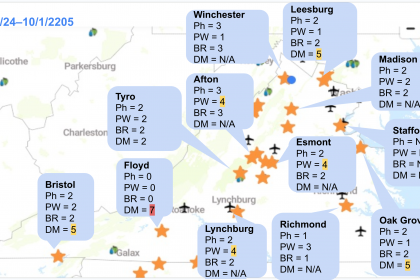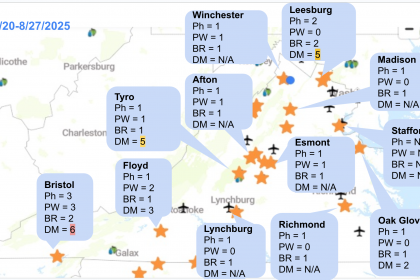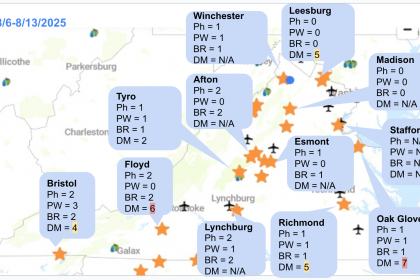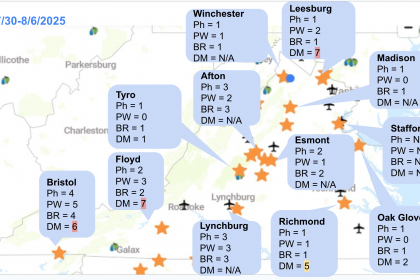Here’s a snapshot from the last week, showing the number of days with the risk of each disease: Ph = Phomopsis, PW = Powdery mildew, BR = Black rot, and DM = Downy mildew. This information was made available through the Wine Board-funded Sentinel Vineyard project.
It seems that we had another relatively dry week. Rain over the Memorial Day weekend caused several days of downy mildew risk, and probably due to overall dryness, powdery mildew risk was high at several locations. Here’s a link to spray considerations at bloom time. We are still in the critical period of cluster infections for downy mildew, powdery mildew, black rot, and Botrytis; thus, please protect your vines.
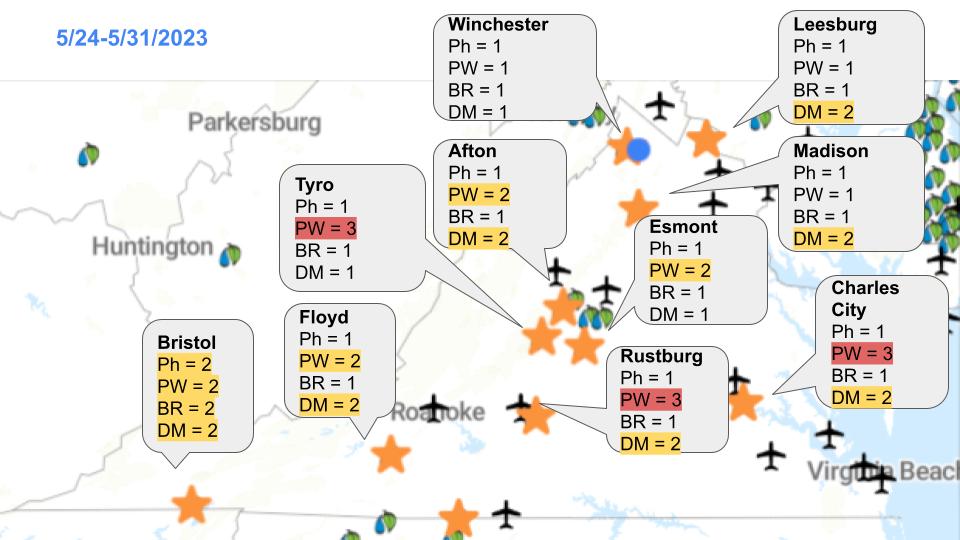
The image above is just a summary of the past seven days. These risk events help you understand what happened. However, preparing your sprays to protect your vines would be best. Please visit https://newa.cornell.edu/ to obtain more detailed information. You can check daily weather data and disease and insect pest model results, including forecasted risks. We paid the annual fee so that growers in Virginia could freely access NEWA.
One way to use this information is to adjust your spray intervals. If you see many days with disease risk(s), you may need to shorten your spray interval, or if you missed a material for downy mildew or black rot, you might wish to spray material(s) with kick-back activity. Or you may want to extend your spray interval, if you have not seen much risks as we have been experiencing this year.
It is essential to understand that the spray decision must be based not only on the weather condition but also on the cultivar and history of the disease(s) in your vineyard.
Lastly, I think the email function is fixed. If you subscribed to this blog, you should receive an email after each post.
